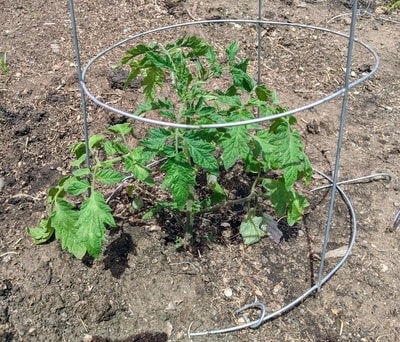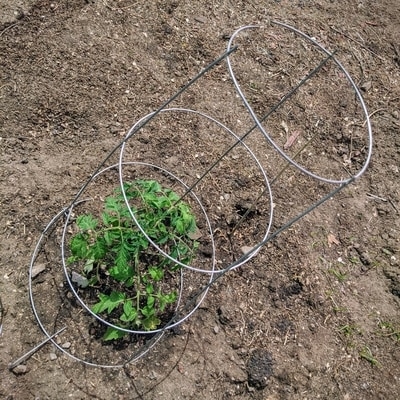If you are just planting a garden for the first time you will, no doubt, want to grow tomatoes.
Once you tell someone you're putting in a new garden you likely will receive helpful(?) advice from friends and family.
No matter where you live there are a lot of funny rules for planting tomatoes. Some of this handed down wisdom is legitimate, but others are clearly just made up and passed along because they are memorable. When I first moved here, several people told me never to plant tomatoes before White Mountain Peak is snow-free. That's clearly too late most years, but it is easy to remember.
The thing about gardening is that every year is different. That's part of the challenge! For this year, at least if you live below 5,000 feet, you should already have planted your tomatoes. As I write this, it's April 27. If you haven't planted your tomatoes, get them in soon. It's probably about time in Coleville and Walker, too.
A good tomato for new gardeners is 'Juliet.' It's a grape tomato, but large for that type. It is good in salads and dehydrates wonderfully. Unlike some fussy slicing tomatoes, it will continue to set fruit all summer. A larger tomato that is tough to screw up is 'Celebrity.' I've had good luck with it in containers. It hasn't been a huge producer for me, but it has been very consistent all the way until fall. Many gardeners in our area raise 'Early Girl' without problems. All of these varieties are (usually) easy to find in our area. If you can't find these, just plant what you can get.
For almost everything in the garden, you should plant transplants level with the soil in the pot you get it in. That's true with tomatoes, too, but there is an exception: tall tomato transplants can be planted deeply if you pinch off the lower leaves. They will grow some new roots on their stems and survive the deep planting. You can do this to shorten the plants so your trellis has more room to support the vines. They also do fine if you don't plant deep.
Make sure that your plants are well-watered before transplanting, and them water them afterward.

For the first week or so after transplant, you may need to water more frequently than you expect since the roots are confined to a small area. Check on the plants a couple times during the day for the first week. You will see what they need.
Your plants will probably need some fertilizer. I use 1 tablespoon of water soluble fertilizer in 1 gallon of water, and give each plant 1 cup of that solution within a few days of transplanting. You can use 1/3 cup of fish emulsion instead if you prefer, but it's stinky and of interest to skunks and raccoons. Repeat this in about a month or so.
Tomatoes are vines and require support. It is not a good idea to let them sprawl all over the ground. There are as many ways to stake tomatoes as there are gardeners. Anything that holds them up is fine, even a bamboo stake with the plants gently tied on works OK.
I use modified cheap tomato cages from the hardware store. Straight from the store, these things have a terrible design with the wide part at the top, so I cut off the 3 "legs" and bend them into hooks like tent stakes. I then turn the cage upside-down (small end up) and pin them to the soil with my newly made hooks. These are very secure, and hold plants well. The 2 pictures on this post show how it's done.

Whatever system you decide use is fine. Just be sure that it is secure.
The rest of the work of raising tomatoes is keeping the weeds and pests under control. If you check your plants daily, it's not that big a deal. Most tomato pests can be blasted off with water or plucked off by hand.
Hopefully you'll have a successful crop this year!
If you have questions contact the Master Gardener help line at immg@ucanr.edu .